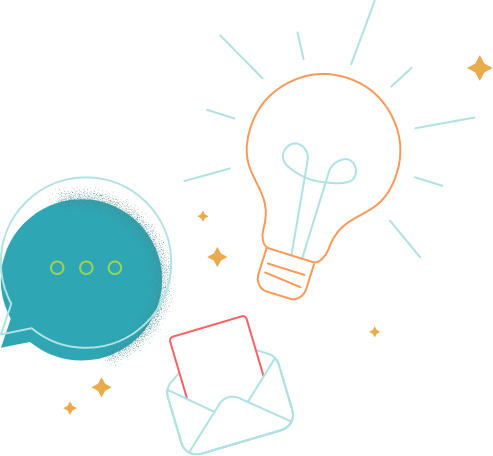September marks the start of the autumnal season in the Northern Hemisphere, and fittingly, this roundup has cooled down some compared to last month. That’s not to say there’s nothing interesting happening, though. This month’s updates include quick looks at some brand-new data from OpenAI and Midjourney and exciting new translation tech that industry bigs are competing to create.
Here’s your September AI in marketing roundup.
The U.S. and Plaintiff States v. Google LLC Case Gained New Ground
I covered this with a bit more depth in a dedicated blog earlier in the month. If you missed it, here’s a quick update on the Google case:
- In 2020, the U.S. Department of Justice (with several states) sued Google, accusing it of monopolizing both general search services and search advertising.
- In August 2024, Judge Amit P. Mehta ruled that Google had violated Section 2 of the Sherman Act by maintaining an illegal monopoly in those markets.
- On September 2, 2025, the court issued a remedies order: Google must share search index and user-interaction data with competitors, cannot use exclusive distribution contracts (e.g., being the default on devices) and must provide “search and search text ads syndication services.”
- Google has raised concerns about user privacy and protecting sensitive data, but the court’s remedies aim to force more transparency and competition.
- For users, the likely effects include more choice in default search providers (e.g., a “choice screen” like in the EU), more diversity in how ads are shown and different experiences across search engines or AI assistants.
- For marketers and SEO/PPC, the change may lead to fragmentation (less Google dominance), more emphasis on content portability/authority across platforms, disruption in paid search formats and increased complexity in attribution/tracking as traffic is spread across more engines.
Subscribe to the ai marketer
Weekly updates on all things ai in marketing.
An AI-Enabled Universal Translator Could Be on the Horizon
Translation technology is a strange case. It’s improved over time, but no one has perfected it, and it’s prone to silly, ‘memeable’ errors. Well, AI advances have enabled some major players to explore new and innovative solutions to language translation. Apple, Google and Meta are racing to build a “universal translator” that filters language in real time:
- Apple unveiled AirPods Pro 3 with a Live Translation feature: they can translate from French, German, Portuguese or Spanish into English in real time.
- Google is working on a Voice Translate feature for the Pixel 10 that allows real-time translation during phone calls while preserving vocal inflection.
- Meta’s Ray-Ban Meta smart glasses already include live translation features: speech in French, Italian or Spanish can be translated and delivered via voice (with text shown on the user’s phone).
Not only could accessible, universal, real-time translation be a game-changer for travel, but I envision near-future meetings where brands and businesses can virtually congregate with international stakeholders — or reach international audiences — and chat in their mother tongue with no barriers. Small brands could begin speaking to global audiences without massive budget allocations for localization.
I have to imagine that there will still be memeable outputs, but I do hope this technology succeeds for the outstanding benefits it could bring.
A New Report Says AI Can Handle More Than 80% of Comms Tasks
Corporate communications is primed for AI augmentation and supervised autonomy, according to a new report from the Boston Consulting Group (BCG). It details that more than 80% of the comms task mix is begging to be streamlined with AI, and that doing so can provide businesses with an edge for creating enterprise value.
BCG’s models show that automation and augmentation can lead to significant time savings.
But the report cautions that cost cuts aren’t the only goal, and that gains should be reinvested into higher-value functions (like strategic communications, crisis management and creative work).
If you’re curious, marketing ranks 4th among functions for generative AI augmentation and 5th in cost impact. Although marketing isn’t what the report is about, the benefits of AI-optimized corporate affairs could work their way through organizations and affect other departments. For instance, marketing teams could inherit narratives crafted and refined by AI-assisted comms for fewer inconsistencies across touchpoints. Or, as comms integrates GenAI tools, marketing may plug into the same systems to create unified brand voice management across PR, paid media and owned content.
A Massive OpenAI Study Says Most ChatGPT Use Is Personal
Nearly 80% of ChatGPT conversations fall into three broad categories: practical guidance, information seeking and writing, according to a massive new working paper from OpenAI called How People Use ChatGPT.
“We find steady growth in work-related messages, but even faster growth in non-work-related messages, which have grown from 53% to more than 70% of all usage,” says the abstract.
Apparently, we’re reaching a place where ChatGPT has become something of a ubiquitous assistant in daily life. While that inherently has nothing to do with work, ChatGPT’s increasing ubiquity could have far-reaching implications, including for our professional lives.
For example, if users increasingly rely on ChatGPT for guidance, interpretation and decision-making outside of work, maybe that eventually works its way into the office. Marketing dashboards or customer insights platforms may need to evolve from just reporting data to advising on strategy.
On the customer side, this could mean users begin expecting AI-style support in their interactions, content experiences or brand engagements as well.
It’s uncertain how things go from here, but I imagine personal usage continues growing and that we’ll see more and more integrations of the tech in everyday life — including the workplace.
Final Thoughts
AI continues to reshape our personal and professional experiences every day, and the way people and businesses communicate is undergoing something of a structural transformation.
Antitrust rulings are forcing greater transparency and competition in search, universal translation is dissolving language barriers (or at least trying to) and AI-augmented communications are boosting speed, consistency and reach across organizations.
For marketers and business leaders, it’s less about trying to keep pace with these shifts, but harnessing them to balance efficiency with trust, scale with nuance and automation with authentic human connection.






